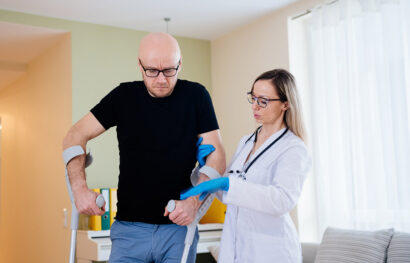 At Core Medical Center, this is the most common question we hear from our neuropathy patients. Many believe that peripheral neuropathy is only caused by diabetes. The truth is, there are a whole lot of people who have neuropathy that are not diabetic. Read on to learn why…
At Core Medical Center, this is the most common question we hear from our neuropathy patients. Many believe that peripheral neuropathy is only caused by diabetes. The truth is, there are a whole lot of people who have neuropathy that are not diabetic. Read on to learn why…
The most common types of neuropathy are:
- Alcoholism. Poor dietary choices made by people with alcoholism can lead to vitamin deficiencies.
- Autoimmune diseases. These include Sjogren’s syndrome, lupus, rheumatoid arthritis, Guillain-Barre syndrome, chronic inflammatory demyelinating polyneuropathy and necrotizing vasculitis.
- Diabetes. More than half the people with diabetes develop some type of neuropathy.
- Medications. Certain medications, especially those used to treat cancer (chemotherapy), can cause peripheral neuropathy.
- Infections. These include certain viral or bacterial infections, including Lyme disease, shingles, Epstein-Barr virus, hepatitis C, leprosy, diphtheria and HIV.
- Trauma or pressure on the nerve. Traumas, such as from motor vehicle accidents, falls or sports injuries, can sever or damage peripheral nerves. Nerve pressure can result from having a cast or using crutches or repeating a motion such as typing.
From the above list, chronic inflammation is the most common cause. When we develop this chronic inflammation, our bodies stop producing substances like NO2 and this is what vasodilates or “expands” the blood vessels allowing proper nutrients to be carried to the capillaries that feed the nerves. This causes the capillaries to die and the nerve is left without a pathway to receive nutrients. Over time the nerve will begin to degenerate (break down) and that is when symptoms start to occur. In diabetes the mechanism is a little different, red blood cells become attached to glucose and these impact the cell’s integrity and other proteins. This is when we see a rise in A1C. Ultimately while the cause is different the big picture is that the blood vessels that supply the nerves can no longer send nutrients and the outcome is the same.
So, the main issue is getting nutrients to the nerve so it can function. There are several vitamins and other substances that the nerve needs to be able to function properly. When they do not receive proper nutrients the myelin sheath begins to break down and symptoms start to occur. It’s kind of like the covering of an extension cord, if unsheathed; electricity can flow freely and not conduct a proper current. While a very simplified example, this is what it’s like for nerves as they degenerate or are damaged by a trauma.
What can we do to stop this?
Once the process has already started it is hard to correct if near impossible even with dietary changes. If you have alcoholism or diabetes it is advisable to correct those behaviors, or the condition will only worsen and spread.
Treatment options…
Currently, in medicine we treat the symptoms of neuropathy, not the cause. While many providers give dietary change recommendations it is typically too late, as the nerves no longer have a pathway. Gabapentin is a medication used to treat neuropathy and it will reduce symptoms but only masks them, and it has its own side effects (this could be a whole other blog topic but for now just look at an objective reference at the end of this blog to read more about gabapentin).
So… does treatment work? The answer is yes and no.
If there was a way to get nutrients to the nerve and invoke angiogenesis we could potentially regenerate the nerve. Currently, there is only one device that is FDA approved and covered by insurance to treat chronic pain caused by neuropathy. This device is called the RST Sanexas and Core Medical Center has this available in our clinic. It uses electrical cell signaling to galvanically push nutrients into the nerve that are injected into the subcutaneous tissue. Over time, and if done often enough and at the correct frequency (based on the condition), it can begin to regenerate the nerve and invoke angiogenesis. While this treatment can help correct the issue, maintenance, home therapy programs and dietary changes will be required. Also, making sure the cause (diabetes or alcoholism) is under control will avoid reinjuring the nerve as was done before.

Does it work for everyone?
Just like all things in medicine nothing is 100%. It is very difficult to predict the outcome we will have on a patient with subjective testing. Biopsies are typically used to measure nerve fiber density so we can determine a baseline and then repeat them in about 6 months. We know that when used with Regenerative Medicines the result is much better. We also know that in cases where symptoms are new, we have the greatest chance of reaching a positive outcome.
What’s the upshot?
While the science is not perfect, there is a way in which to help patients suffering from peripheral neuropathy. Currently, we are seeing several patients reduce their symptoms and improve their quality of life.
The RST Sanexas machine is completely safe and does not harm the patient or mask symptoms. The relief felt is from nerve tissue regeneration.
Call our office today to schedule your consultation! (816) 427-0201




